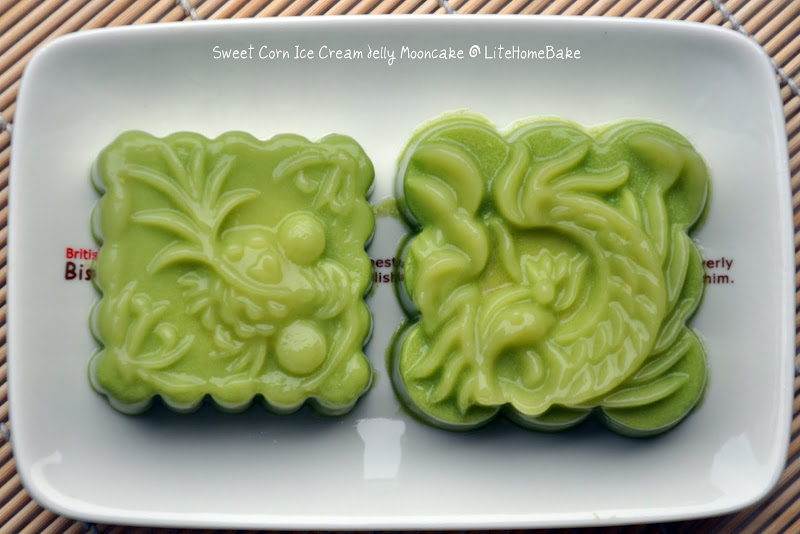
Do you know your roots?? Yes? Do you know enough about it then? Edith of Precious Moments' invitation to participate in her Heritage Food Trail event got me thinking for awhile. I was touched that she left a personal note to extend the invitation. Thanks, Edith.
Well, I only know this fair bit about myself. As we say in our dialect,
Wa Si Hokkien Lang meaning I am Chinese, from the Hokkien clan, and if I were to trace it down a little deeper, I was told our family originated from the Eng Choon sub-clan. Basically this means, our ancestors came from the Fujian Province of China. Being what is known as the Banana kind to our fellow Chinese (i.e. Yellow Outside, White Inside aka Chinese who doesn't speak/read Chinese but English), we never got much exposure about our Chinese roots. Although I don't read Chinese, I am proud to say I can speak Hokkien fluently. We needed it to talk to our grandparents, Ah Mah (grandma) and Ah Kong (grandpa) otherwise they would need to learn how to speak English instead (which i think they did pick up a smattering bit along the way :)) Nowadays, I tend to be more appreciative of the ability to converse in our dialect. Whenever I meet somebody from the same clan, we break into our dialect (they say those from the same clan are distant relatives, in most cases the distance beyond imagination). Unlike back then, I remember it felt so proud to be able to speak English to a fellow Chinese. Getting more appreciative of my roots, a sign of old age?
Now how many Hokkien dishes do I know? Most of what I think are Hokkien dishes were introduced to me by my Ah Mah, in fact I have a "Ah Mah's Inspirations" category which I intend to build to cherish her memories. Ah Mah didn't really hand down her recipes, hers were built over the years through experience and stored within her memory. For the times that we remembered to ask when we were not too busy indulging, it would be in "agak-agak" (estimate) units which can become more complicated when one discovers she has her very own measuring tools. We have ourselves to blame for not putting in much practice and also by allowing Ah Mah to spoil us.
When I was young, I always had the impression that whatever Ah Mah made belonged to our clan but nowadays I am not too sure anymore because I see so many similiarities among the other clans, it becomes a little more tricky, making me wonder "Is this ours or theirs?" Maybe it's my ignorance that is causing this confusion. Hopefully, I will learn more through Edith's event. However, I am pretty sure I wouldn't go wrong with this one, since it popularly known by its Hokkien name, the Bak Chang (steamed meat rice dumplings). No, this post is not about Bak Chang, simply because I don't make them very well. So, here I am with it's close cousin, Steamed Glutinous Rice in Hokkien Style :)
It was known as Ee Peng to the family. My strongest memory of this dish would be eating it when we celebrated the full moon of a new addition to the family. Besides this, we had pickled ginger, red eggs and the angku kuih too (a type of sweet steam cake). At that time these celebrations were not too far apart since there are close to 30 of us in my generation, within the extended family that is :) Ah Mah was indeed proud of her broods.
The rice is stir-fried with dried shrimps, shitake mushrooms, meat, chinese sausage before being steamed. Dark soy sauce being the main seasoning used, complements the dish (which by itself is already very flavourful) with a nice aroma and its dark brown colour. I maybe wrong but I think we Hokkien Lang like dark soy sauce, a lot of our dishes are 'black black' in colour! This dish is quite similar in taste to the cantonese version of Loh Mai Kai commonly found in Dim Sum restaurants. The difference is in the Hokkien version the accompaniments are mixed into the rice, as such one gets to eat them throughout in a more even manner.
Here's the recipe based on what I learned from Ah Mah's version and I made reference to Wen's version on
Wen's Delight just to make sure I was on the right track.
I was contemplating whether to continue with this when I noticed that
Honey Bee Sweets had already posted this dish on her blog in conjunction with the same event while I was preparing this post (yes, I am that slow, unfortunately). I decided to go on when I noticed that her recipe is slightly different. I thought why not go ahead and share it so that we can also see the different variations in each other's home.
One would also see this in many other sites. Ah Mah's version had little tofu cubes and we don't use ginger in it. Another thing, we don't steam or serve it in little bowls in an upside manner like the Loh Mai Kai although i am not sure whether it's just for photography effect. I believe none is superior than the other but don't we all treasure our house version, priceless for all the love, the stories and the memories behind it.

Recipe
Ingredients
- Glutinous Rice - 300g (Soak for 3 hours and drain)
- Pork - 150g (Cut into small strips, season with 1 tsp oyster sauce, 1tsp soy sauce, 1 tsp dark soy sauce and 1/2 tsp corn flour)
- Dried Shitake mushroom - 50g (Soak to soften and cut into strips)
- Dried Shrimps - 40g (Washed, drain and leave some in whole and chop others to smaller pieces)
- 3 pieces of fried tofu (Cut into small cubes and fried)
- 1 Chinese sausage (Sliced)
- 7 Shallots (Sliced)
- 2 cloves of Garlic (Chopped finely)
Seasonings
- 2 tbsp dark soy sauce
- 1 tbsp light soy sauce
- 2/3 tsp salt
- 1 tsp pepper
- 1/2 cube chicken stock
Garnish
- Fried Peanuts
- Fried Shallots
- Chopped Spring Onions
Method
- Heat oil in wok and stir fry shallots until slightly brown. Remove 1/3 and drain dry for garnish.
- Add in garlic.
- Add in dried shrimp, continue to stir fry until fragrant.
- Add pork and mushroom. Stir fry until pork is cooked.
- Add in rice and seasonings.
- Add in 2/3 bowl of water and let in simmer until water dries up.
- Transfer into steaming tray and steam for 30-45 minutes until rice is cooked and soft.
- Garnish with peanuts, shallots and chopped spring onions.

On a lighter note, fellow Hokkiens or those who speak this dialect or even those who don't (to hear what our dialect sounds like), check out this funny song,
Wa Si Hokkien Lang.






















































